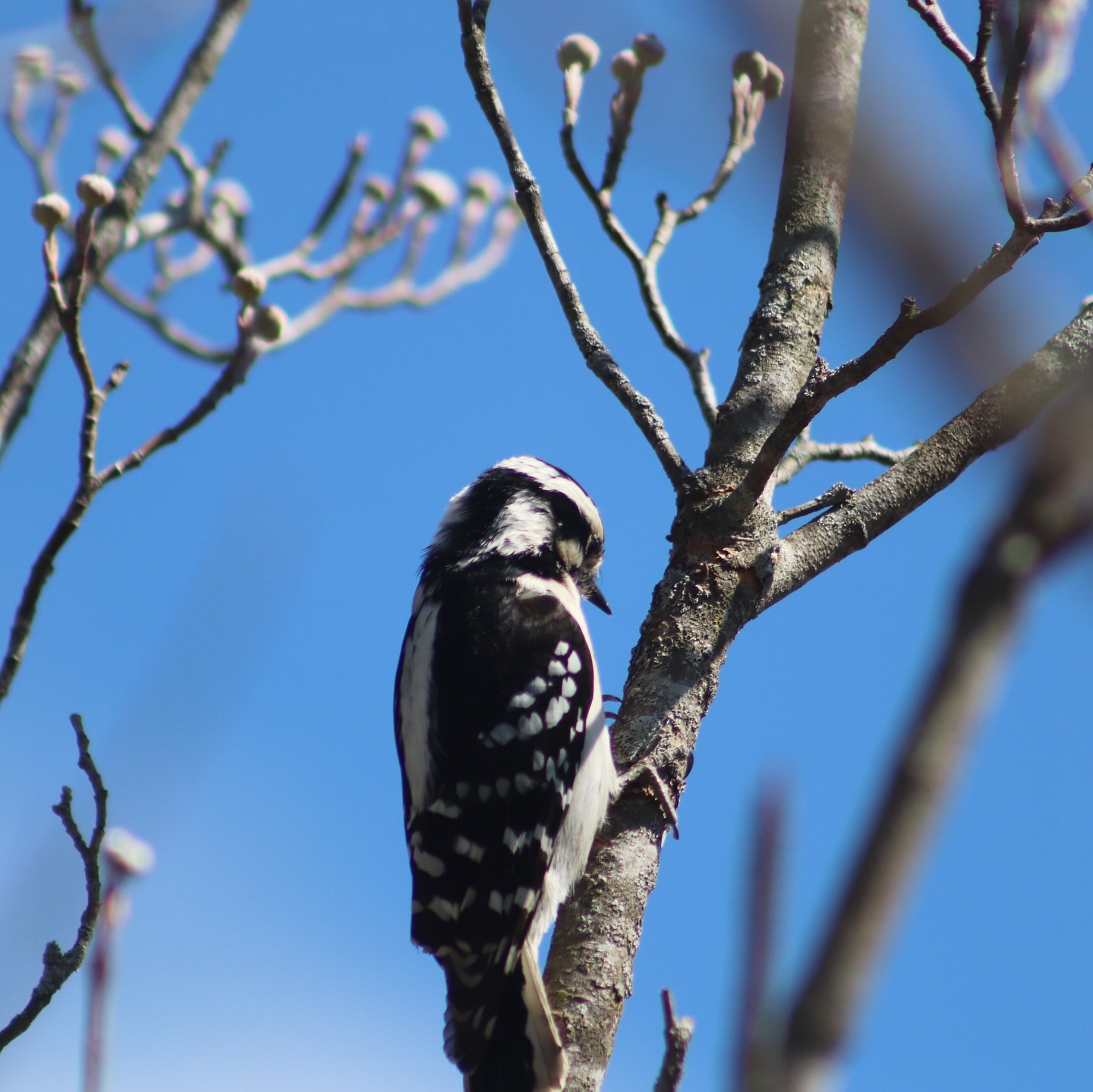by Jacob Crider
The good old reliable Downy Woodpecker (Dryobates pubescens) is a common year-round species of woodpecker in Kentucky and is one of our most familiar backyard birds. These pint-sized birds range throughout the United States and Canada, excluding the dryer desert regions of the Southwest. They live in almost any wooded habitat, where they can find trees to create their tiny cavity nests and feed on insects, seeds, and berries.

Downy Woodpeckers are about the same size as a finch, have black and white checkered patterns on their wings, and males possess a small red spot on the back of their head (also known as the nape). The very similar Hairy Woodpecker (Dryobates villosus) also inhabits Kentucky woods, but is a bit larger, has a longer beak, and deeper more robust call. Hairy Woodpeckers are far less common, and don’t visit feeders and neighborhoods as frequently as the reliable Downy.

While nutritious grubs and tree dwelling insects consist of the bulk of their diet, they also feed on ants and caterpillars to round things out. Insects that live within the bark, trunk, and woody parts of trees are known as wood boring insects, and usually make up a large part of a woodpecker’s menu. Despite being called “boring” their life cycles and functions in the ecosystems are quite interesting, and without them woodpeckers would have a hard time finding food for their young. Unlike some other larger woodpecker species, Downy Woodpeckers can be observed feeding on thin twigs and branches of trees in search for food, allowing them to put in work in the forest cleanup crew. They are also big fans of suet feeders and will eat bird seed when available. Once a Downy Woodpecker finds a good feeding station, it will revisit frequently to check things out, especially in winter when insect prey is scarce.

In fall and winter, Downy Woodpeckers can be seen coexisting with other small interspecific songbirds in mixed flocks, in which they find additional security and can even help migratory birds find shelter and feeding opportunities. Additionally, the small cavities they create in the limbs and trunks of trees function as habitat for frogs, rodents, insects, and can be used as nesting habitats for chickadees, titmice, and nuthatches. Downy Woodpeckers may also utilize birdhouses and have been seen inside bluebird houses at Creasey Mahan! Listen for their loud and abrupt “pip” call in the autumnal woods and look closely at the branches and trunks of trees where these checkered denizens hop from tree to tree.

